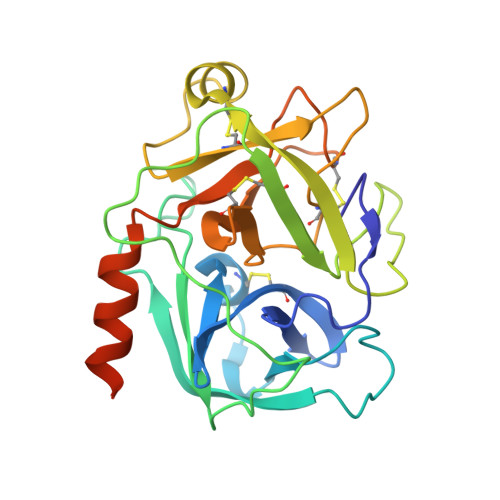Structures of neutrophil serine protease 4 reveal an unusual mechanism of substrate recognition by a trypsin-fold protease.
Lin, S.J., Dong, K.C., Eigenbrot, C., van Lookeren Campagne, M., Kirchhofer, D.(2014) Structure 22: 1333-1340
- PubMed: 25156428
- DOI: https://doi.org/10.1016/j.str.2014.07.008
- Primary Citation of Related Structures:
4Q7X, 4Q7Y, 4Q7Z, 4Q80 - PubMed Abstract:
Trypsin-fold proteases, the largest mammalian protease family, are classified by their primary substrate specificity into one of three categories, trypsin-like, chymotrypsin-like, and elastase-like, based on key structural features of their active site. However, the recently discovered neutrophil serine protease 4 (NSP4, also known as PRSS57) presents a paradox: NSP4 exhibits a trypsin-like specificity for cleaving substrates after arginine residues, but it bears elastase-like specificity determining residues in the active site. Here we show that NSP4 has a fully occluded S1 pocket and that the substrate P1-arginine adopts a noncanonical "up" conformation stabilized by a solvent-exposed H-bond network. This uncommon arrangement, conserved in all NSP4 orthologs, enables NSP4 to process substrates after both arginine as well as post-translationally modified arginine residues, such as methylarginine and citrulline. These findings establish a distinct paradigm for substrate recognition by a trypsin-fold protease and provide insights into the function of NSP4.
Organizational Affiliation:
Department of Early Discovery Biochemistry, Genentech, Inc., 1 DNA Way, South San Francisco, CA 94080, USA.

















